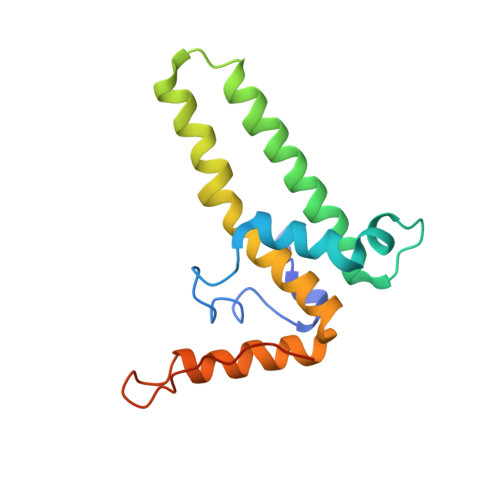Hepatitis B Virus Capsids Have Diverse Structural Responses to Small-Molecule Ligands Bound to the Heteroaryldihydropyrimidine Pocket.
Venkatakrishnan, B., Katen, S.P., Francis, S., Chirapu, S., Finn, M.G., Zlotnick, A.(2016) J Virol 90: 3994-4004
- PubMed: 26842475
- DOI: https://doi.org/10.1128/JVI.03058-15
- Primary Citation of Related Structures:
5D7Y - PubMed Abstract:
Though the hepatitis B virus (HBV) core protein is an important participant in many aspects of the viral life cycle, its best-characterized activity is self-assembly into 240-monomer capsids. Small molecules that target core protein (core protein allosteric modulators [CpAMs]) represent a promising antiviral strategy. To better understand the structural basis of the CpAM mechanism, we determined the crystal structure of the HBV capsid in complex with HAP18. HAP18 accelerates assembly, increases protein-protein association more than 100-fold, and induces assembly of nonicosahedral macrostructures. In a preformed capsid, HAP18 is found at quasiequivalent subunit-subunit interfaces. In a detailed comparison to the two other extant CpAM structures, we find that the HAP18-capsid structure presents a paradox. Whereas the two other structures expanded the capsid diameter by up to 10 Å, HAP18 caused only minor changes in quaternary structure and actually decreased the capsid diameter by ∼3 Å. These results indicate that CpAMs do not have a single allosteric effect on capsid structure. We suggest that HBV capsids present an ensemble of states that can be trapped by CpAMs, indicating a more complex basis for antiviral drug design.
Organizational Affiliation:
Molecular and Cellular Biochemistry Department, Indiana University, Bloomington, Indiana, USA.















